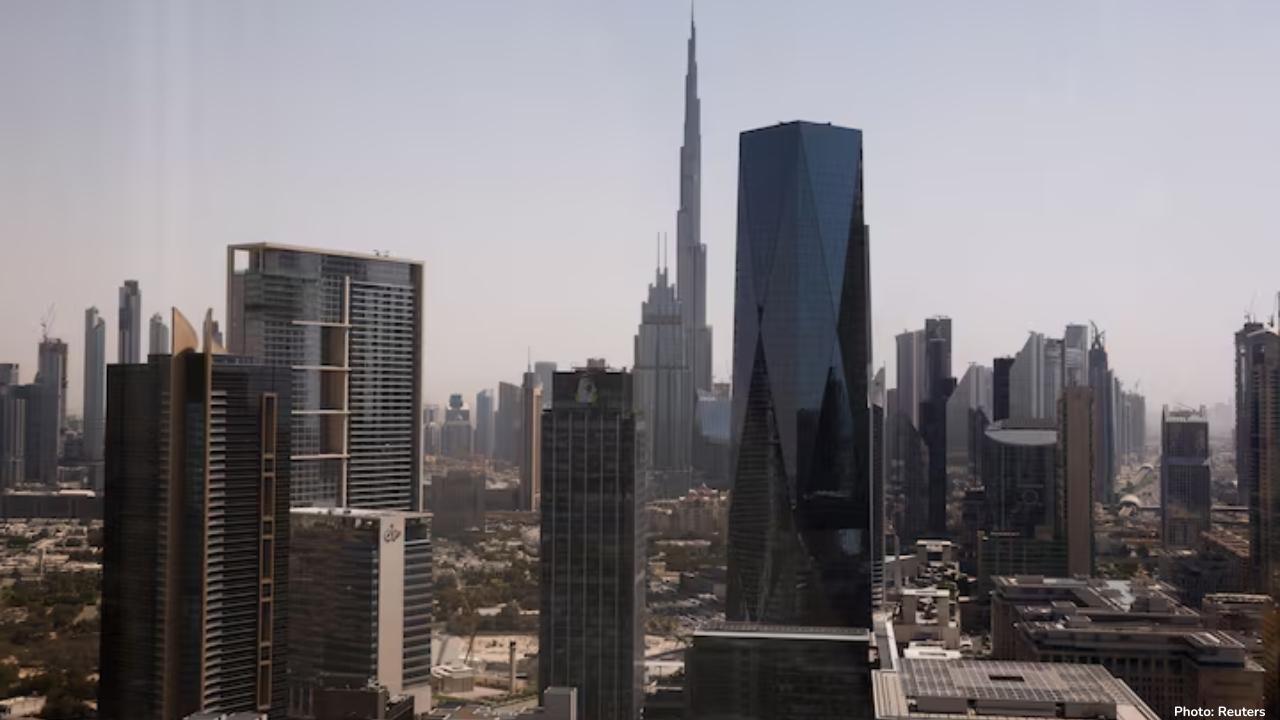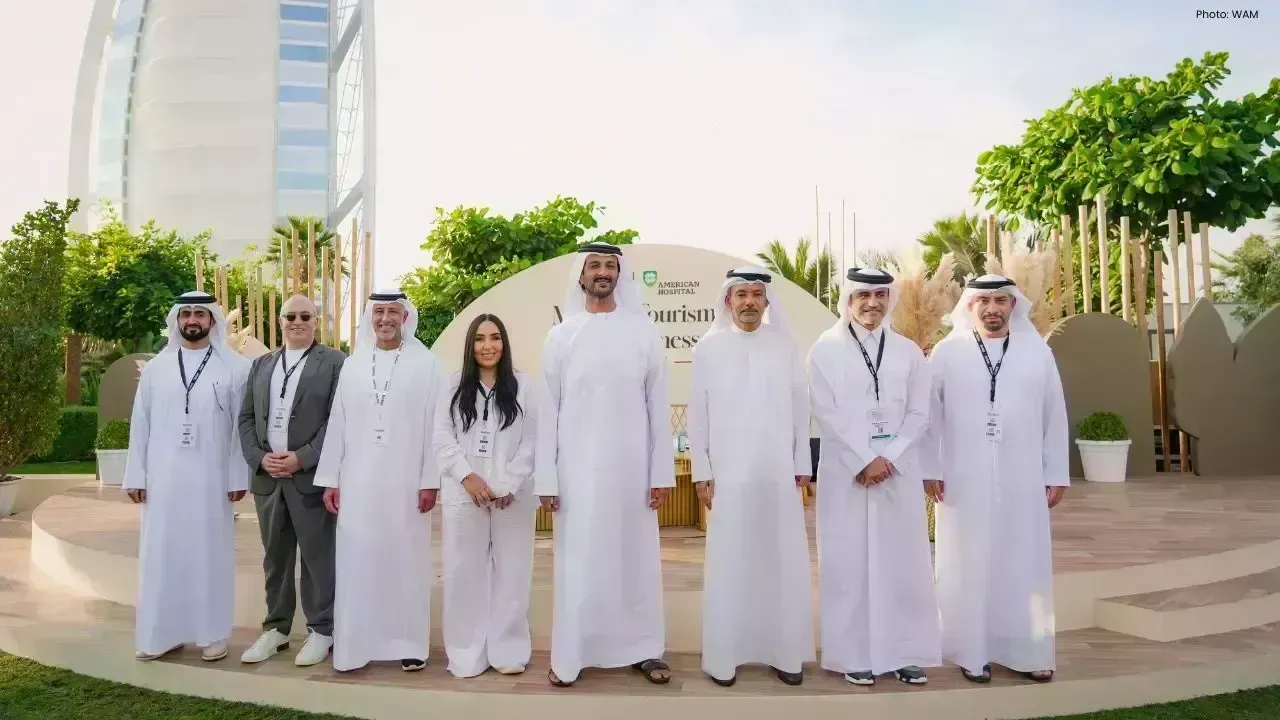
Post by : Monika
The United Arab Emirates (UAE) witnessed a significant rebound in its non-oil private sector in September 2025, marking the strongest growth in seven months. This surge is seen as a positive sign for the country’s economy as it continues to diversify away from oil dependence and expand its private business sector.
The S&P Global UAE Purchasing Managers’ Index (PMI), which measures economic activity, rose to 54.2 in September from 53.3 in August. A reading above 50 indicates expansion, meaning that UAE businesses are generally growing and performing better than the previous month.
Understanding the PMI and Its Importance
The Purchasing Managers’ Index (PMI) is an important economic tool that measures the health of a country’s private sector. It is based on surveys of business managers and covers indicators such as new orders, output, employment, supplier deliveries, and inventory levels. A PMI above 50 shows growth, while below 50 indicates contraction.
In September, the UAE’s non-oil PMI not only remained above 50 but also rose to its highest level since February, showing renewed confidence among business managers. Analysts suggest that this growth reflects strong domestic demand, increased investment, and rising business optimism in the private sector.
Drivers of Growth
The main driver of the growth in September was a sharp increase in new business. The new orders sub-index surged to 57.2 from 53.1 in August, marking the fastest pace of expansion in several months. More than 30% of firms surveyed reported higher intake of new orders, suggesting that businesses are seeing increased demand for their goods and services.
This rise in new business can be attributed to several factors:
Economic Diversification Efforts: The UAE government has been actively promoting sectors such as tourism, real estate, hospitality, logistics, and financial services. These initiatives are attracting investments and encouraging private sector activity.
Domestic Demand: Local consumption has improved as businesses, residents, and tourists spend more on services and goods. The rebound in sectors like tourism and retail is contributing to the increased orders for private companies.
Global Trade and Investment: UAE-based businesses continue to benefit from global trade and foreign investment. Many companies are exporting goods or collaborating with international partners, driving growth in new business.
Employment Growth
Along with rising new orders, employment levels increased at the fastest rate since May. Companies are hiring more workers to manage the growing volume of new business and to expand their operations. This increase in employment shows that businesses are confident about the future and expect the demand to continue rising in the coming months.
The growth in employment also reflects broader economic stability in the UAE. By creating more job opportunities, the private sector contributes to higher incomes, better living standards, and increased domestic spending, which further supports economic growth.
Output and Production
The UAE non-oil private sector also reported higher output levels in September. Companies are producing more goods and services to meet rising demand. The output sub-index improved along with new orders, indicating that the private sector is expanding capacity and improving productivity.
Despite the increased production, companies remained cautious with their inventory levels, which declined for the third consecutive month. This suggests that businesses are managing their stock carefully, perhaps due to concerns about supply chain disruptions or fluctuating demand.
Costs and Prices
Input costs, such as materials, labor, and energy, have been rising, reflecting both local and global economic conditions. However, output price inflation softened, which means that companies are not raising the prices of their goods and services as quickly. This is partly due to competitive pressures in the UAE market. Companies are trying to maintain customer demand while managing their costs efficiently.
The balance between rising input costs and controlled output prices demonstrates that UAE businesses are adapting to market conditions while remaining competitive. This approach helps sustain growth without causing inflationary pressures that could harm consumers.
Dubai’s Role in the Recovery
Dubai, the UAE’s largest business and tourism hub, played a key role in the positive performance of the private sector. The headline PMI for Dubai rose to 54.2 in September from 53.6 in August. The increase was supported by sharp growth in new work levels, leading to higher output and employment.
Dubai’s recovery is closely linked to sectors such as tourism, hospitality, and trade. With the return of international visitors, major events, and exhibitions, businesses in Dubai are experiencing strong demand and renewed confidence, which in turn boosts the overall UAE economy.
Economic Outlook
Challenges and Risks
Despite these challenges, the UAE’s resilient business environment, strong governance, and diversification strategy make the economy well-positioned to sustain growth in the non-oil sector.
Government Initiatives Supporting Growth
Impact on Jobs and Households
Growth in the non-oil private sector directly benefits job creation and household income. More employment opportunities mean higher wages, better standards of living, and increased consumer spending. As households spend more on goods and services, businesses experience higher demand, creating a positive cycle of growth.
The rise in employment also supports youth participation in the labor market, helping younger generations gain experience and contribute to the economy. This aligns with the UAE’s long-term goal of creating a knowledge-based economy with skilled workers and diversified employment opportunities.
The strong growth in the UAE’s non-oil private sector in September 2025 highlights the country’s resilience, economic diversification, and business confidence. The increase in new orders, output, and employment indicates that the private sector is thriving despite global economic challenges.
Dubai’s performance, rising demand, and government initiatives all contribute to this positive momentum. While challenges such as inflation and global uncertainty remain, the UAE’s strategic focus on diversification, investment, and innovation ensures that the private sector will continue to play a vital role in the economy.
As the UAE continues to reduce its reliance on oil revenue and develop its private sector, this growth trend provides hope for sustainable economic development, higher employment, and improved living standards for residents and businesses alike.
The UAE’s non-oil private sector is a key driver of future economic stability, and September’s strong performance demonstrates that the country is on the right path toward long-term prosperity and resilience.










OpenAI Highlights Growing Cybersecurity Threats from Emerging AI Technologies
OpenAI has raised alarms about the increasing cyber risks from its upcoming AI models, emphasizing s

Manchester City Triumphs 2-1 Against Real Madrid, Alonso Faces Increased Scrutiny
Manchester City secured a 2-1 victory over Real Madrid, raising concerns for coach Xabi Alonso amid

Cristiano Ronaldo Leads Al Nassr to 4-2 Victory Over Al Wahda in Friendly Face-Off
Ronaldo's goal helped Al Nassr secure a 4-2 friendly win over Al Wahda, boosting anticipation for th

Landon Donovan Challenges Australia Coach on World Cup Prospects
Landon Donovan counters Australia coach Tony Popovic’s optimism for the World Cup, expecting an earl

Mercedes-Benz Forms Landmark Partnership with WTA
Mercedes-Benz and the WTA unveil a significant partnership effective January 2026, with major invest

Abhishek Addresses Divorce Rumours Concerning His Family
Abhishek Bachchan confirms that daughter Aaradhya remains oblivious to divorce speculations, focusin